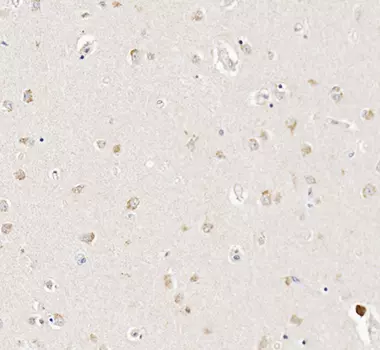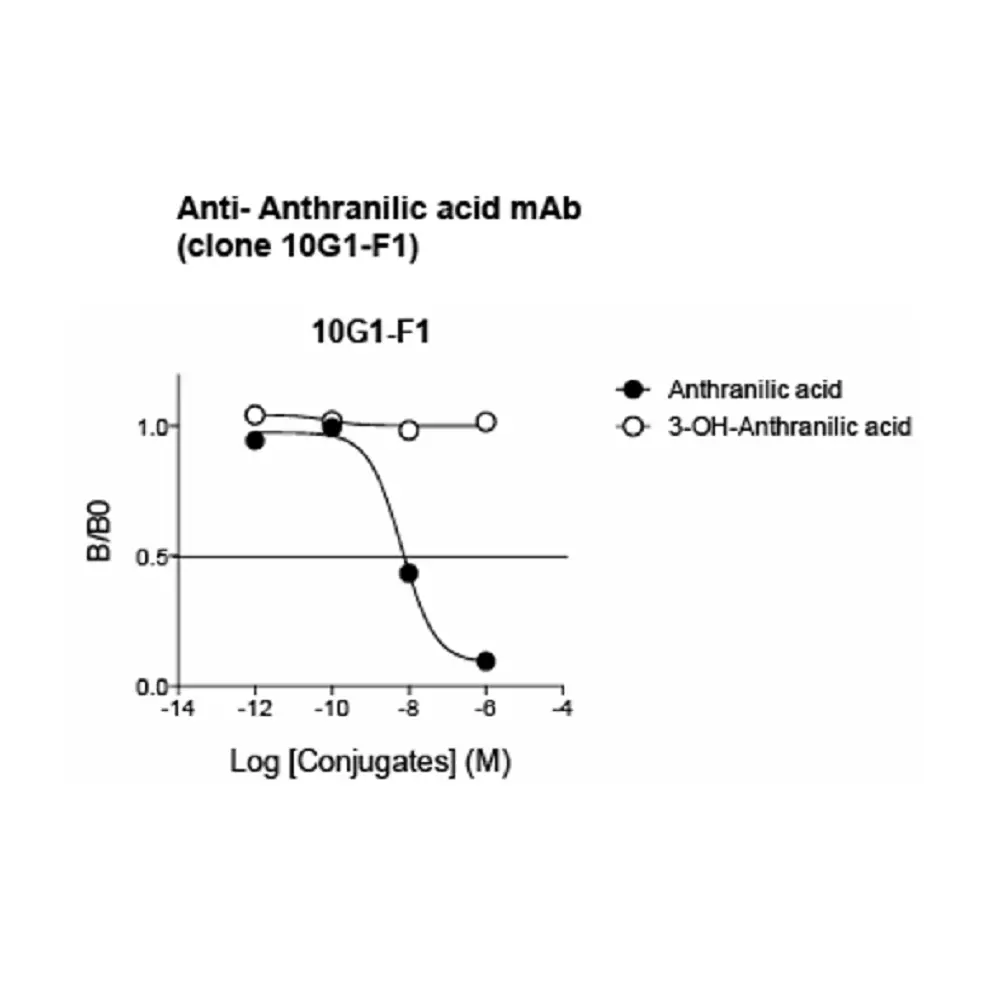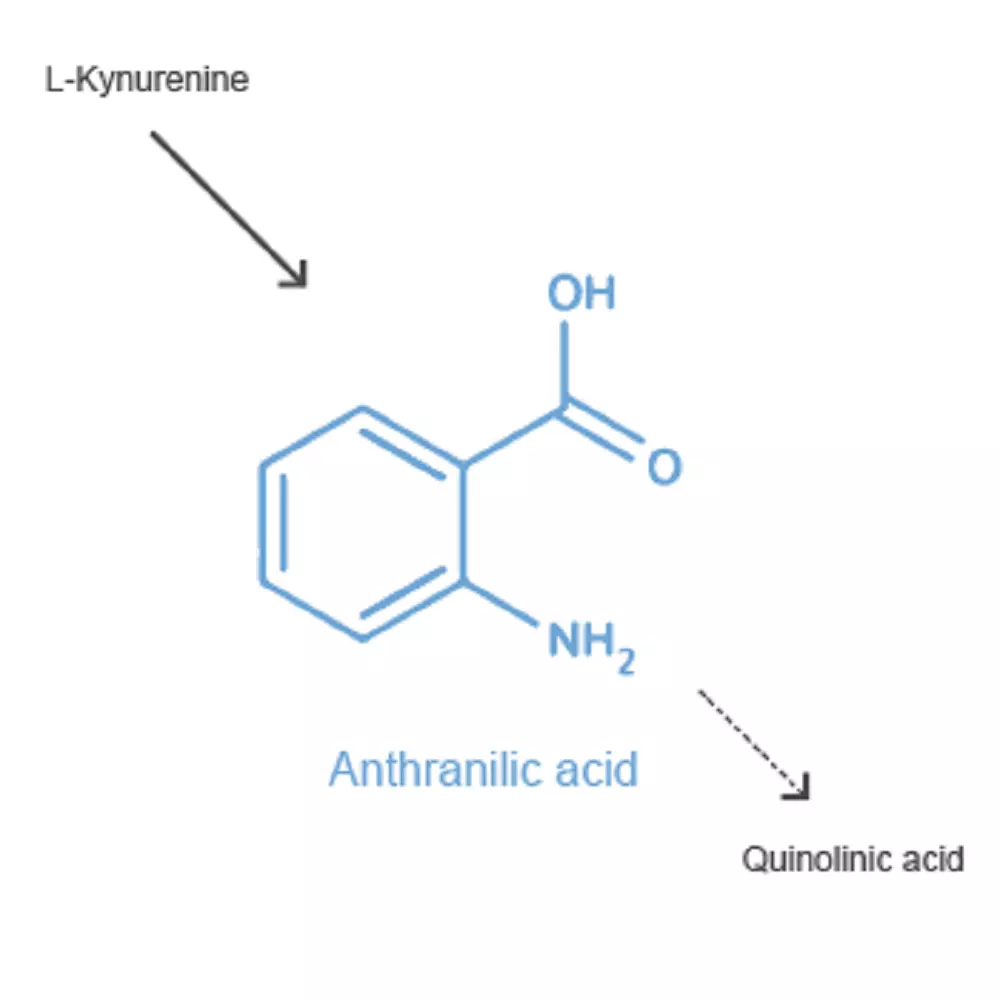Anthranilic acid Antibody – Mouse Monoclonal
Ref: IS013
Kynurenine pathwayTryptophan metabolismMonoclonal AntibodiesICCIFIHC
 +
+Anthranilic acid detection by IHC in human brain
Immunohistochemical analysis of human caudate-putamen highlights Anthranilic acid accumulation in the cytoplasm of glial cells. Paraffin-embedded brain tissue was subjected to pH=6 antigen retrieval followed by overnight incubation with primary antibody (dilution 1/50). After incubation with polymer conjugated secondary Ab, DAB was used to reveal the staining.
DatasheetMSDS
The monoclonal anti-Anthranilic acid antibody 10G1-F1 was validated for immunohistochemistry (IHC) in human brain tissues. Highly specific, as demonstrated by competitive ELISA, the antibody consistently delivered clean and reproducible stainings.
| Clonality | Monoclonal antibody (clone 10G1-F1) |
| Host | Mouse |
| Valided applications | IHC |
| Reactivity | Reacts with all species |
| Format | 50µL |
| Size | 50µL |
|---|
449.00€
97 in stock
Worldwide shipping
Product overview
| Product name | Anthranilic acid antibody |
| Synonyms | 2-AA antibody
Anti- vitamin L1 antibody Anti- Anthranilate antibody Anthranilate antibody 2-Aminobenzoic acidantibody |
| Immunogen | Conjugated Anthranilic acid |
| Clone | 10G1-F1 |
| Specificity | When tested in competitive ELISA, the anti-anthranilic antibody did not show any significant cross reactivity with 3-hydroxyAnthranilic acid |
Storage
| Form | Liquid |
| Purity | Purified IgG |
| Concentration | 0,5mg/ml |
| Storage | Store at 4°C |
| Storage buffer | Store at +4°C for short term (1-2 months). Aliquot and store at -20°C for long term. Avoid repeated freeze / thaw cycles |
| Material safety datasheet | Download MSDS |
| Immunohistochemistry (IHC) | Dilute at 1:50-1:500. Perform heat antigen retrieval (pH=6) before initiating IHC staining protocol on paraffin-embedded and frozen sections |
| Immunofluorescence (IF) | Dilute at 1:50-1:500 on paraffin-embedded and frozen sections. Perform heat antigen retrieval and incubate with incubate with fluorescent secondary antibody conjugate |
| Comments | Optimal working dilutions must be determined by the end-user |
| Restrictions | For research use only |
Selected publications about Anthranilic acid:
- Coburn C, Allman E, Mahanti P, Benedetto A, Cabreiro F, Pincus Z, Matthijssens F, Araiz C, Mandel A, Vlachos M, Edwards SA, Fischer G, Davidson A, Pryor RE, Stevens A, Slack FJ, Tavernarakis N, Braeckman BP, Schroeder FC, Nehrke K, Gems D. Anthranilate fluorescence marks a calcium-propagated necrotic wave that promotes organismal death in C. elegans. PLoS Biol. 2013 Jul;11(7):e1001613. doi: 10.1371/journal.pbio.1001613. Epub 2013 Jul 23.
- Palmer GC, Jorth PA, Whiteley M. The role of two Pseudomonas aeruginosa anthranilate synthases in tryptophan and quorum signal production. Microbiology. 2013 May;159(Pt 5):959-69. doi: 10.1099/mic.0.063065-0. Epub 2013 Feb 28.
- Shibata K, Fukuwatari T. The metabolites in the tryptophan degradation pathway might be useful to determine the tolerable upper intake level of tryptophan intake in rats. J Nutr. 2012 Dec;142(12):2227S-2230S. doi: 10.3945/jn.112.163469. Epub 2012 Oct 17.



